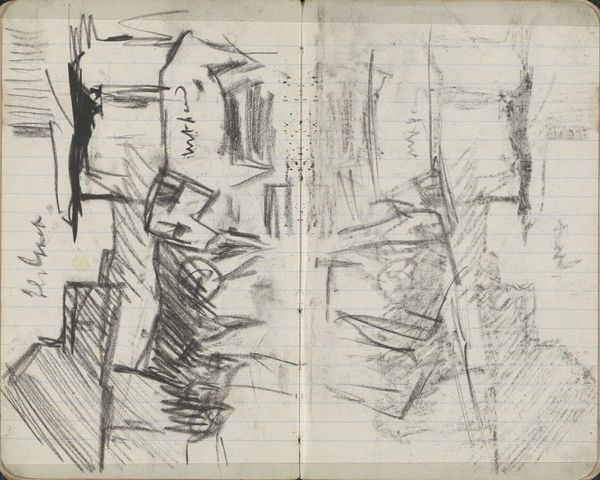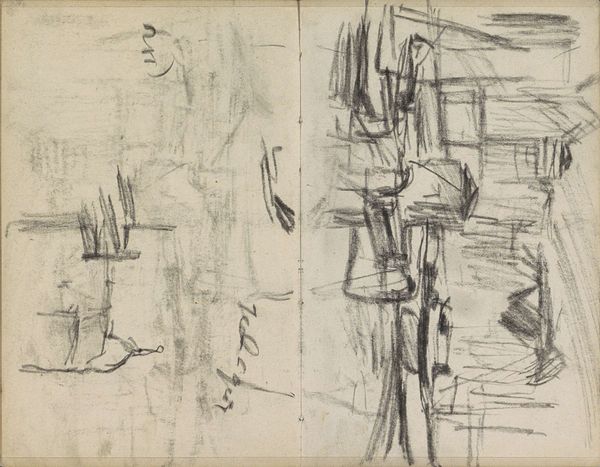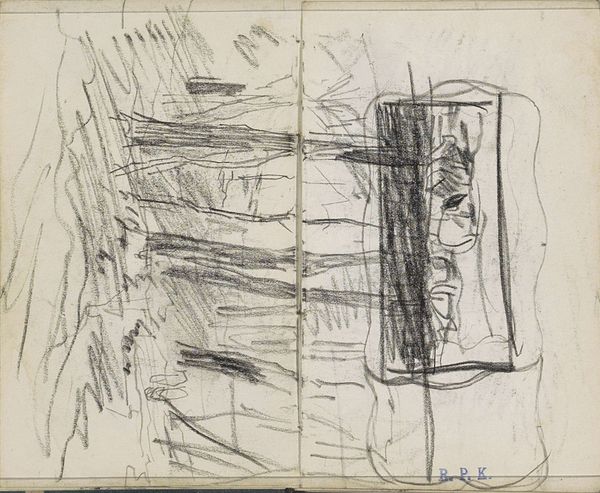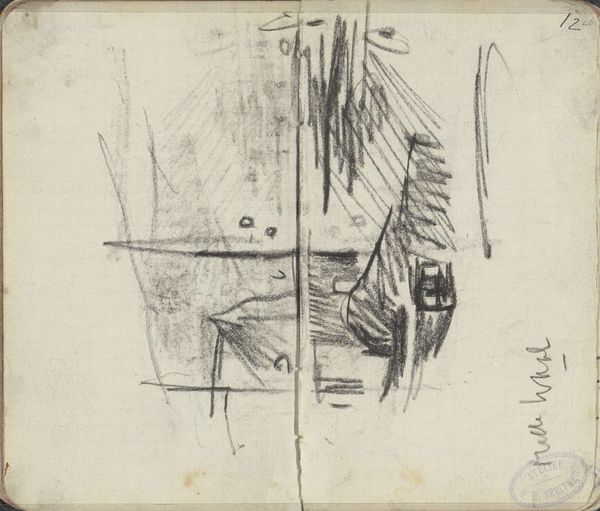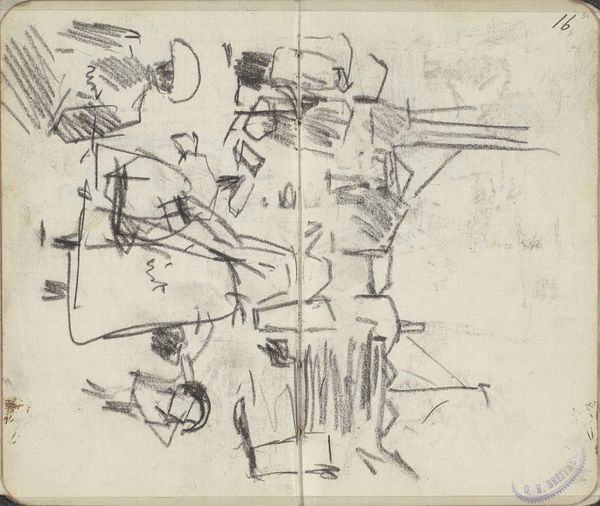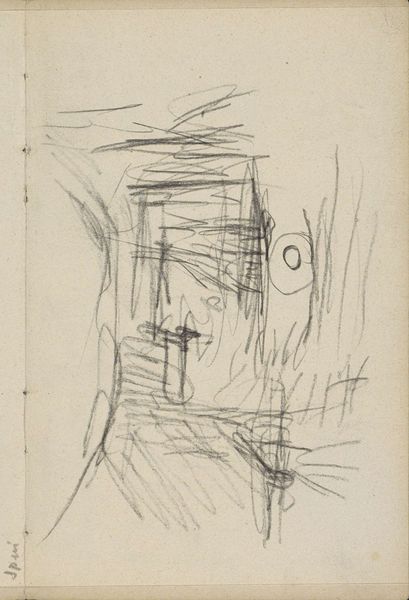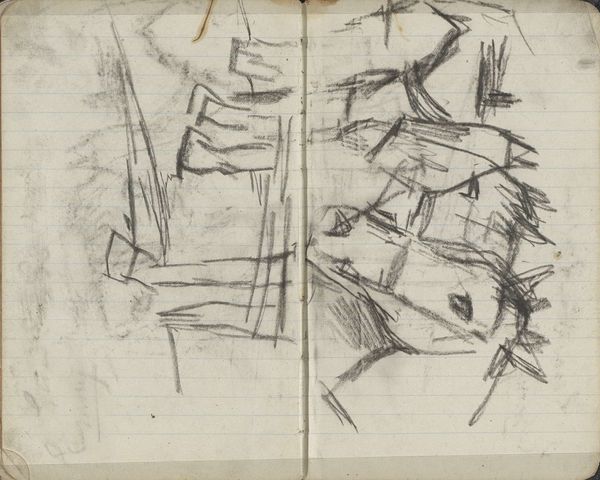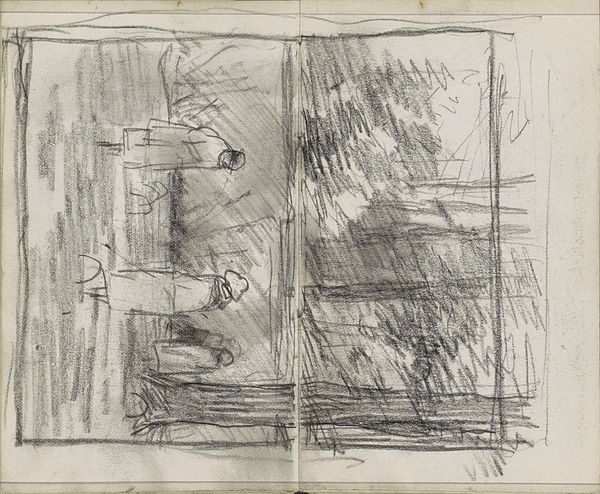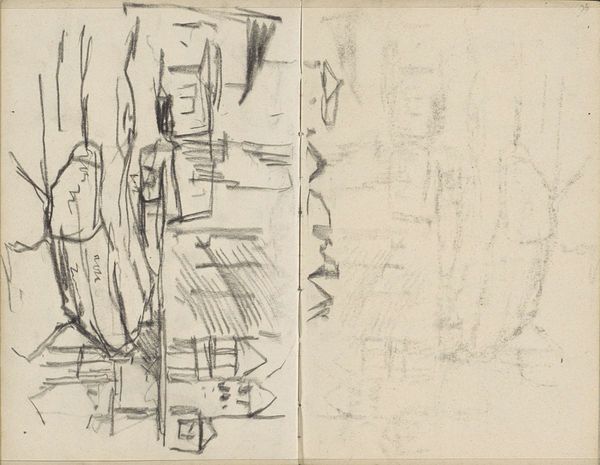
Gezicht op een gracht te Amsterdam, mogelijk de Lauriergracht 1896
0:00
0:00
georgehendrikbreitner
Rijksmuseum
Copyright: Rijks Museum: Open Domain
Editor: Here we have George Hendrik Breitner's "View of a canal in Amsterdam, possibly the Lauriergracht," created around 1896. It's a graphite drawing on paper, currently held at the Rijksmuseum. Looking at the quick, almost frantic lines, I get a sense of urban anxiety or transience. How do you interpret this work? Curator: I see this drawing as Breitner grappling with the rapid urbanization of Amsterdam and its effects on the lives of everyday people. This isn't just a pretty picture; it's a raw, almost desperate attempt to capture a moment in a city undergoing profound change. The heavy use of graphite and the stark lines speak to the grit and harshness that came with progress, often displacing communities. Editor: So, the unfinished quality reflects social upheaval? Curator: Precisely! Think about the social context. The late 19th century saw immense population growth in Amsterdam, leading to overcrowding and strain on resources, and widening inequalities. Breitner, known for his interest in the working class, seems to be documenting not just the buildings, but also the atmosphere of a society on the brink. Consider how movements in feminism and labor activism sought justice in that period. Does the use of such a fleeting medium, graphite on paper, change how you read the drawing? Editor: It does. It emphasizes the provisional nature of the scene – as if the Amsterdam he depicts could disappear any moment. So it is not only an aesthetic statement but an act of social commentary. Curator: Indeed. It’s a powerful statement about urban life, and the price of modernization viewed through the lens of class and identity. This resonates even today, as cities globally continue to grapple with these issues of growth, displacement, and social justice. Editor: I never would have thought of it that way initially. It gives me a whole new framework for understanding not only Breitner, but the role of art in documenting social change. Curator: And that's the beauty of art: it invites us to constantly re-evaluate our own place within the larger narrative.
Comments
No comments
Be the first to comment and join the conversation on the ultimate creative platform.


